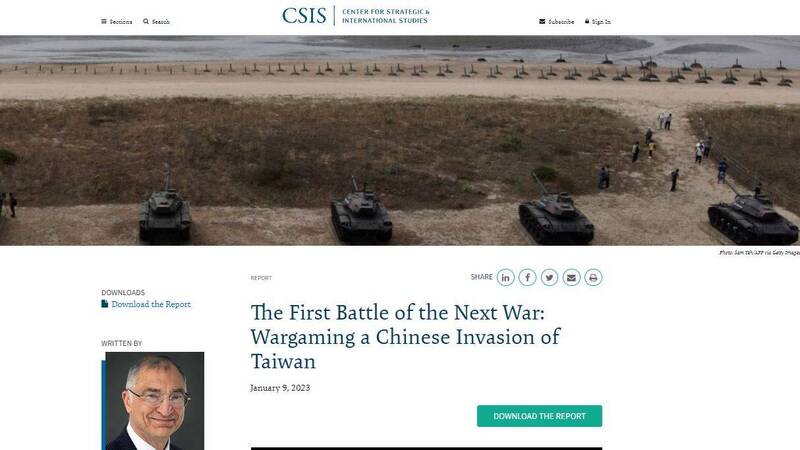The Center for Strategic and International Studies (CSIS), a think tank in Washington DC, recently conducted 24 war games for China's attack on Taiwan in 2026.
(The picture is taken from the CSIS website)
[Instant News/Comprehensive Report] The Center for Strategic and International Studies (CSIS), a think tank in Washington DC, recently conducted 24 war games for China’s attack on Taiwan in 2026. The late stage of the game showed that Taiwan’s anti-ship missiles were finally exhausted, which highlights the importance of my country’s Whether the number and production plan of anti-ship missiles can correspond to the future war of Chinese aggression is one of the key points to determine the outcome of the war. CSIS also believes that the use of anti-ship missiles by the US military is the key to the outcome of military push.
Military personnel pointed out today that Tiangong-3, extended-range Gongsan anti-aircraft missiles, as well as Xiongsan supersonic anti-ship missiles and extended-range Xiongsan missiles have been included in the naval and air combat power development plan and mass-produced. , As for whether to carry out the second phase of mass production of sea-to-air missiles, it will depend on the development of the cross-strait situation and China's military threat to Taiwan.
Please read on...
The Chinese Navy and Air Force currently have multiple types of anti-ship missiles. In addition to the domestically produced Xiongji, Yuzo, and extended-range Xiongzo anti-ship missiles, they have also successively purchased shore-based and air-launched Harpoon anti-ship missiles from the United States. The shore-based Harpoon anti-ship missile system has a range of more than 120 kilometers. At present, it has purchased 400 shore-mounted Harpoon missile systems from the United States. In addition to being deployed on Taiwan’s main island, it will also be deployed in Xiyu Township, Penghu County in the future.
Although the Chinese military has not stated the actual number of Xiongfeng series missiles to be delivered to the navy, the annual output of the Xiongfeng series missiles of the Chinese Academy of Sciences has reached 201 pieces, including the annual production of 70 pieces of Xiongsan supersonic anti-ship missiles and the second-sonic anti-ship missiles of Xiongfeng. Missiles and Xiongsheng cruise missiles can be produced at an annual rate of 131.
The "Haifeng Brigade" is currently the anti-ship missile force of the Chinese Navy. The captain is a colonel. It has a fixed position squadron, a mobile squadron and a support squadron. There are 9 squadrons in total. The current number of officers and soldiers is about 700 to 800. Mass production in the future After the H2 missiles, H3 missiles, H3 missiles with extended range, and the shore-mounted Harpoon anti-ship missile system purchased by the United States are delivered to Taiwan in batches, nearly 20 new mobile squadrons and anti-ship missile training centers will be planned to be established as combat support units.
In the "basic simulation", "pessimistic simulation" and "optimistic simulation" campaigns conducted by the US think tank this time, the People's Liberation Army's war against Taiwan all ended in failure, but the United States, Japan and Taiwan also suffered great losses.
CSIS also believes that the use of US anti-ship missiles is the key to the results of military pushes. For example, the US Air Force can take advantage of the longer range advantages of AGM-158C (LRASM) and AGM-158 (JASSM-ER) to launch missiles outside the PLA air defense area. Conduct an attack to destroy amphibious landing forces, air bases, and ports, thereby slowing down the overall offensive against Taiwan.
Yusan Missile.
(The picture is taken from the website of the Chinese Academy of Sciences)
